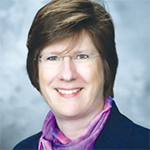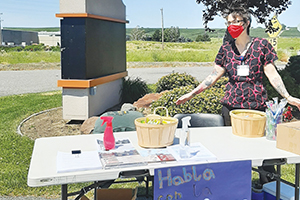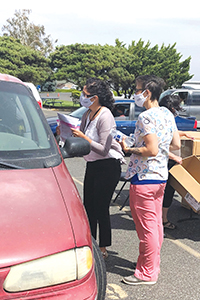For Dr. Karen Boudreau, the most interesting finding from an analysis of COVID-19 infections that she helped conduct was how much consequence factors that many people can't change on their own have on their risk of contracting the deadly virus.

"My biggest takeaway from the study is that the circumstances in which we live — circumstances that are, in many instances, outside of our immediate control — have an enormous impact on our health," Boudreau said. "And we need to pay attention to that, and we need to do what we can and work with communities to look for strategies to make improvements in those conditions."
Boudreau is senior vice president for enterprise care management and coordination in the Population Health Division at Providence St. Joseph Health. She and a team of health system colleagues published research in August in the International Journal for Equity in Health that identified environmental, health and socioeconomic factors that are associated with a higher risk that a population will contract coronavirus.
The research team analysis used de-identified data from more than 34,000 COVID-19 tests done at Providence St. Joseph Health facilities and from the system's electronic medical records as well as publicly available block- or census tract-level demographic information on topics such as educational attainment, financial insecurity and air quality. Based on the results, the researchers identified factors associated with a higher likelihood of contracting the virus.
The team's findings about those most likely to test positive for the virus identified commonalities in:
- Environmental factors, including housing, income, and transportation insecurity, living in neighborhoods with poor air quality and residing in senior living facilities.
- Sociodemographic factors, including being Asian, Black or Latino and not speaking English.
- Clinical factors, including serious illness such as diabetes, chronic kidney disease and being overweight.
The study concluded: "Risk of COVID-19 infection is higher among groups already affected by health disparities across age, race, ethnicity, language, income, and living conditions. Health promotion and disease prevention strategies should prioritize groups most vulnerable to infection and address structural inequities that contribute to risk through social and economic policy."

Unlike some other studies, this one did not delve into mortality rates from COVID-19, the disease caused by the novel coronavirus. Boudreau said the focus was on finding out who was at the highest risk of contraction in hopes that strategies could be put in place to mitigate that risk.
She considers crafting those strategies to be a vital role for herself and others with health care systems that have pledged to serve the poor and vulnerable. "In this instance, we have evidence of the impact of poverty but also other vulnerabilities that we should be trying to make a difference in," she said.
$50 million investment
Providence St. Joseph Health cited the results of the study when it announced on Sept. 1 that it will invest $50 million over the next five years as part of an effort to reduce health disparities and achieve health equity. The investment will start with "an immediate response to the impact of COVID-19, especially for communities of color and those disproportionately affected by the pandemic," the system said in a press release.
That response will include expanding outreach and education, increasing the COVID testing supply to facilities that serve marginalized populations, and ensuring equitable access to treatment as well as a COVID vaccine, when it becomes available, Providence St. Joseph Health said.

Dr. Rhonda Medows, president of population health management at Providence St. Joseph Health and a co-author of the disparities study, said the $50 million commitment is remarkable not only for its size but also because it goes well beyond a onetime pledge. This five-year investment will fund operational, clinical and social services improvements addressing both long-standing and COVID-related health disparities, she said.
"It's not an add-on, it's not a gift, it's not episodic," Medows said. "The whole thing is intended to be deployed like we would any other very important priority operational change. So that means that within each of our regions and each of our communities, we have not only strategic plans and implementation plans, but we have a five-year strategy."
Culturally sensitive response
Boudreau said Providence St. Joseph is already working within the regions of its seven-state system to identify specific health disparities in local communities and make use of existing tools, resources and programs "to ensure its investment has the greatest impact for the greater number of people." In Walla Walla, Washington, Providence St. Joseph workers went into the fields with trusted leaders from the Latino community to provide information to the agricultural workers in Spanish about how they could keep themselves as safe as possible from the virus.
A big part of helping those who are especially vulnerable to contracting the infection is education and providing access to basic supplies, Boudreau said. "There are lots of people who don't have the information they need, and we need to think about how we access the sources of information that they are used to using," she said. "We also need to make sure that people have what they need to take care of themselves and to protect their families, that they have access to masks and cleaning supplies and that they have strategies for keeping their contacts limited."
She added that the prevention strategies must to be sensitive to the culture of populations. "It's pretty much our mission to work with communities on finding solutions that work from their perspective," Boudreau said.
